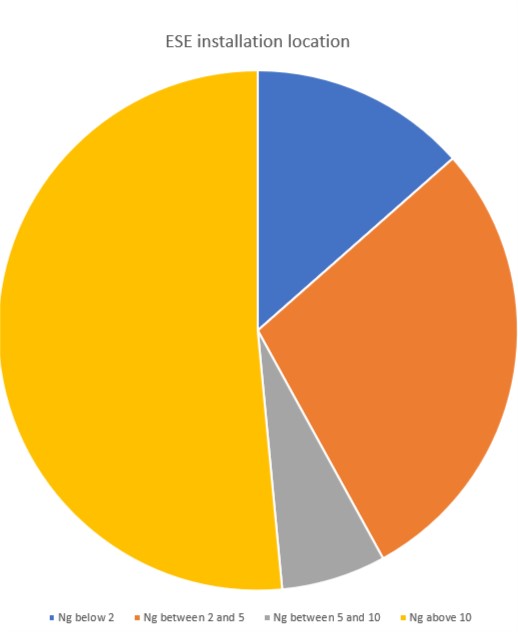
10 Nov Early Streamer Emission Lightning Rods installation location statistics worldwide
Fundamental and applied research, test procedures, experimentation, prototyping … these phases are absolutely vital for every type of industries, prior to a product launch. But a product success, ie. its actual use in the said industry, relies on the field experience.
As an example, a five-stars crash test result represents a nice promotional benefit for a new car. But it won’t make the success of this model. Its success is rather based on long term experience: reliability, safety, used-car valuation etc….
The Lightning protection industry follows the same path: Early Streamer Emission air terminals (ESE) are tested, certified, designed by engineers having studied in detail the lightning phenomenon. But what made the success of this advanced technology for the last 35 years is the users experience. Its reliability proven track record is the most key decision-making factor.
Based on the International Lightning Protection Association data collected in 2020, 51.50% of the ESE rods are installed in regions where the lightning density Ng (number of discharge / year / km²) is higher than 10, which are the high lightning-prone areas in the world. As a comparison, northern European countries have a Ng value below 2.
| Ng (Discharge/km²/year) | less than 2 | 2 to 5 | 5 to 10 | more than 10 |
| WORLDWIDE Average % of ESE | 13,50% | 28,50% | 6,50% | 51,50% |
It illustrates both the reliability and the withstanding capabilities of these rods:
- Reliability since the protection of the structures and occupants is in line with the standards models. The Mega Jati survey conducted in Malaysia has proven that the statistics are equal or even lower for ESE rods vs Meshed Cage design in terms of damage occurrence.
- Withstanding capabilities because in such high lightning density regions, the probability for the air terminals to withstand several discharges is extremely high. The rods are designed to maintain the same level of safety, even if they are regularly stuck by lightning.
Moreover, ILPA, in a study, has shown that the number of ESE installed worldwide during the 25 first years of ESE existence, is estimated above 500 000 units. By a simple rule of 3, we can extrapolate that much more than 700 000 units are now installed. And according to the statistics above it means that about 350 000 units are installed in high density areas…
To conclude, lightning remains a natural phenomenon. Mother Nature remains therefore the ultimate test for lightning protection systems. All the statistics available confirm the Early Streamer Emission air terminals capability to successfully pass this test.



Sorry, the comment form is closed at this time.